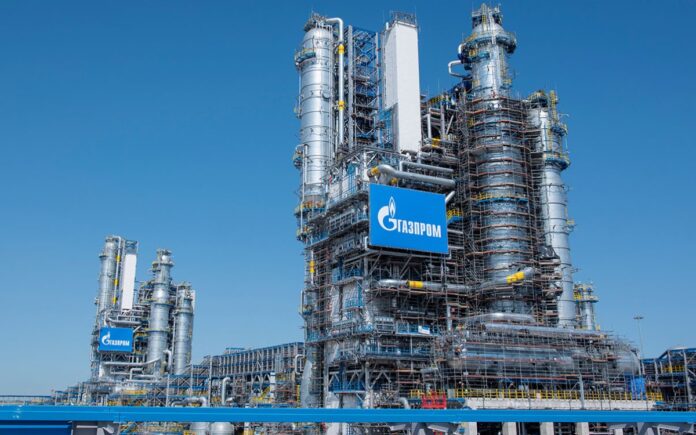Moscow: Once Russia’s most profitable company, Gazprom, the Kremlin-owned energy giant, is grappling with a challenging period as it endeavors to offset the loss of European gas sales by redirecting its focus to the domestic market and exports to China.
The company recently disclosed an annual net loss of $7 billion, marking its first deficit since 1999, following a sharp decline in trade with Europe. This setback underscores the profound impact of European sanctions on Russia’s gas industry and underscores the limitations of Moscow’s burgeoning partnership with China.
Unlike the oil sector, which has been able to mitigate the impact of international sanctions by redirecting sea-borne exports to alternative buyers, Gazprom’s heavy reliance on Europe as its primary sales market has left it vulnerable. The conflict between Russia and Ukraine led to a significant reduction in Gazprom gas imports by the EU, with the volume decreasing from 63.8 billion cubic meters (bcm) in 2022 to 28.3 bcm in the following year.
Also Read | Ukraine Braces for Record Electricity Imports After Russian Strikes
Furthermore, the disruption caused by mysterious blasts at Nord Stream undersea gas pipelines in September 2022 further undermined Russian gas trade with Europe. In response, Russia has sought to bolster its gas exports to China, aiming to reach 100 bcm per year by 2030 through initiatives like the Power of Siberia pipeline.
However, challenges persist. The ambitious Power of Siberia 2 pipeline, which aims to export 50 bcm annually via Mongolia, faces hurdles such as pricing disagreements. Additionally, efforts to establish a gas trading center in Turkey, proposed by President Vladimir Putin in 2022, have yet to materialize.
Also Read | In the Face of Russian Aggression, Zelenskyy Urges Unity and Vigilance
While Gazprom’s pipeline supply to China shows promise, revenues from this market are significantly lower than those from Europe. Despite the potential for increased sales volume, the comparatively lower prices in China mean that revenue generated will not match the levels seen in Europe.
Dr. Michal Meidan of the Oxford Institute for Energy Studies emphasizes that while China provides an outlet for Russian gas, it does not offer the same profitability as the European market. Russian pipeline gas sold to China in 2023 was priced at $6.6 per million British thermal units (mmBtu), considerably lower than the average price in Europe of $12.9/mmBtu.
Also Read | Intense Fighting Erupts as Russian Troops Advance in Ukraine’s Kharkiv Region
Looking ahead, Russia anticipates further declines in gas prices for China, potentially impacting Gazprom’s profitability. Rivalry from other gas suppliers to China and the rise of liquefied natural gas present additional challenges.
The financials of Gazprom, including its oil and power units, highlight the strain on the natural gas business, which saw revenue more than halved in the past year. Amidst these challenges, Gazprom may explore strategic shifts towards gas processing products, but sustainable returns may be elusive in the short term.



